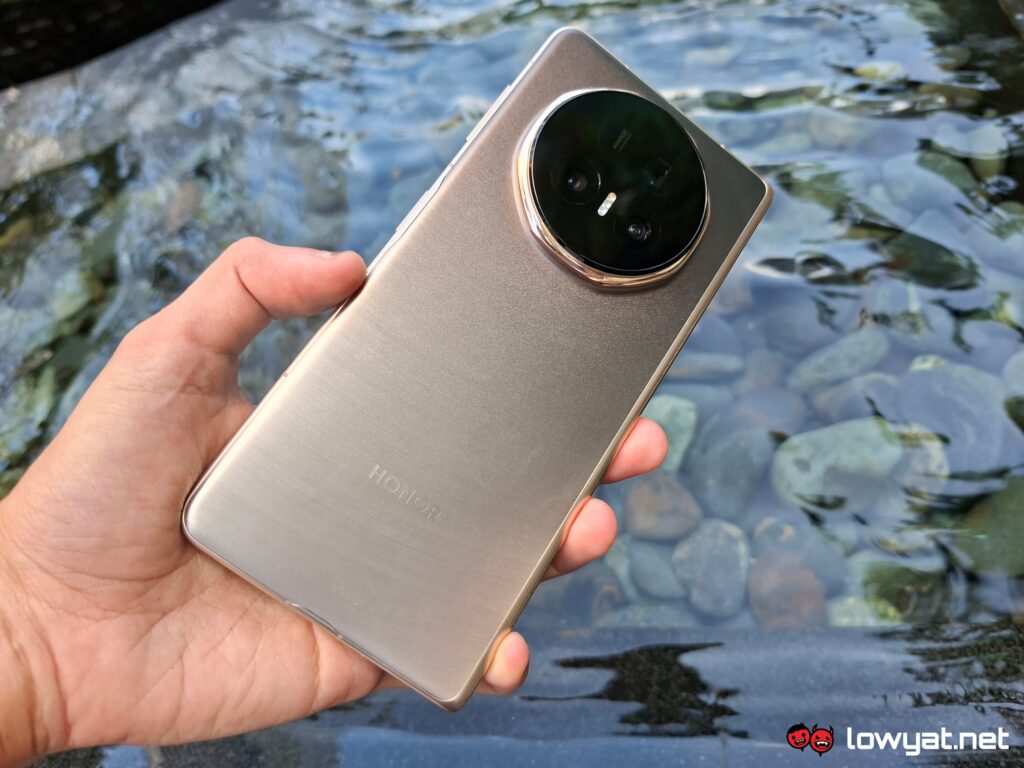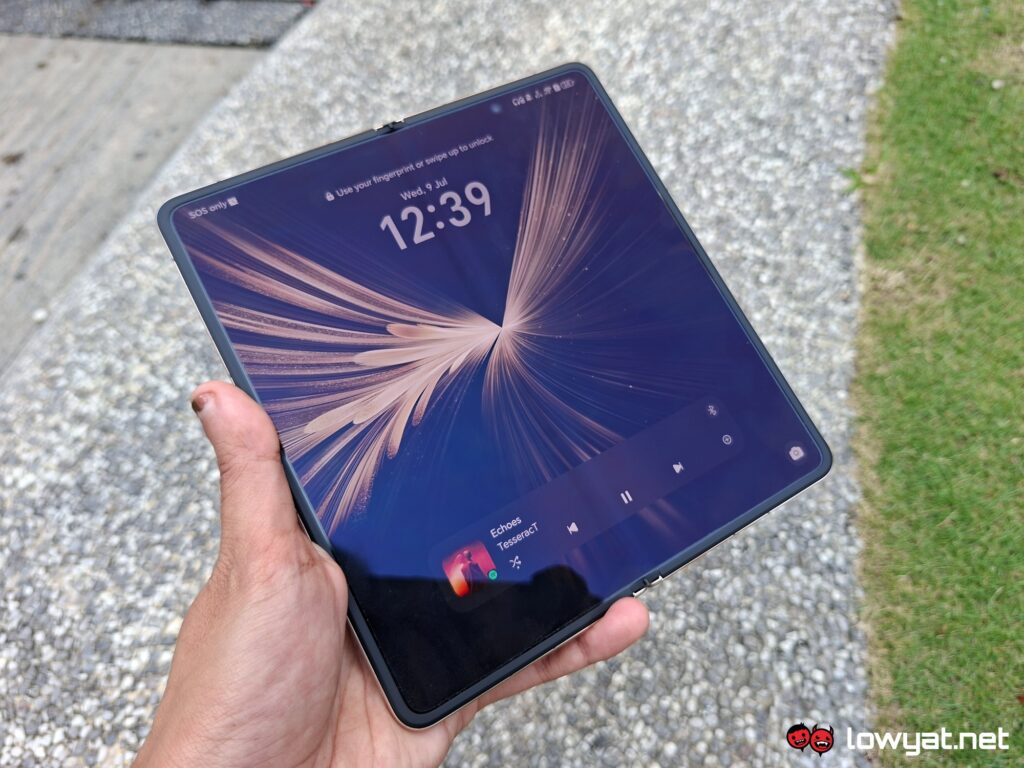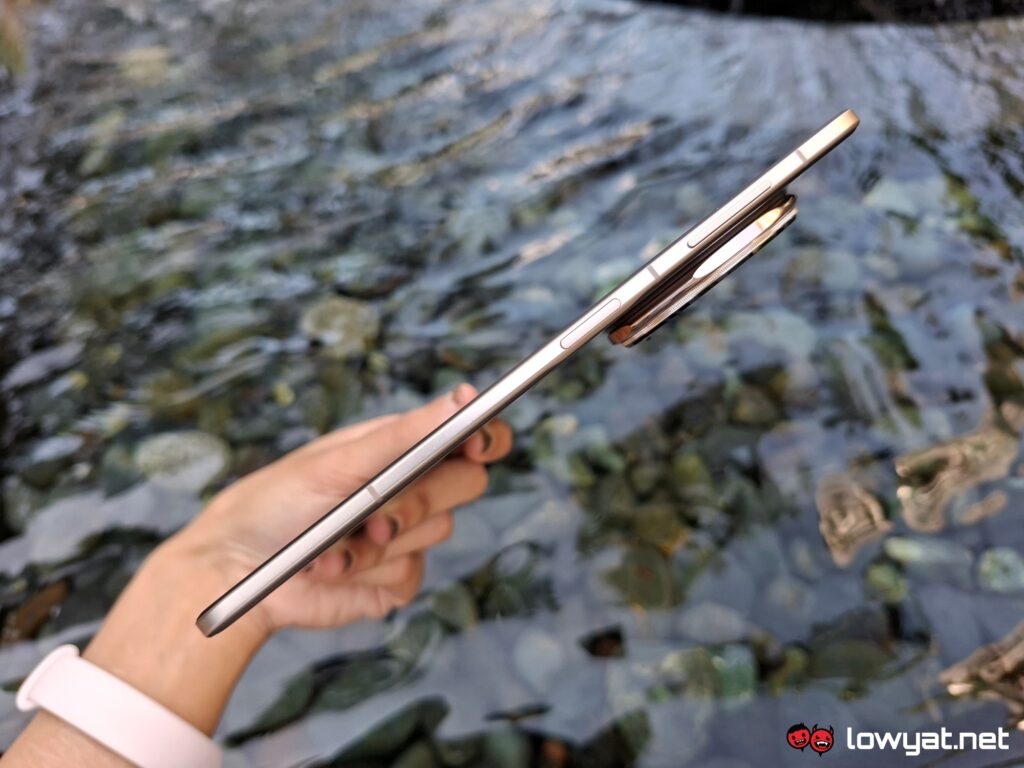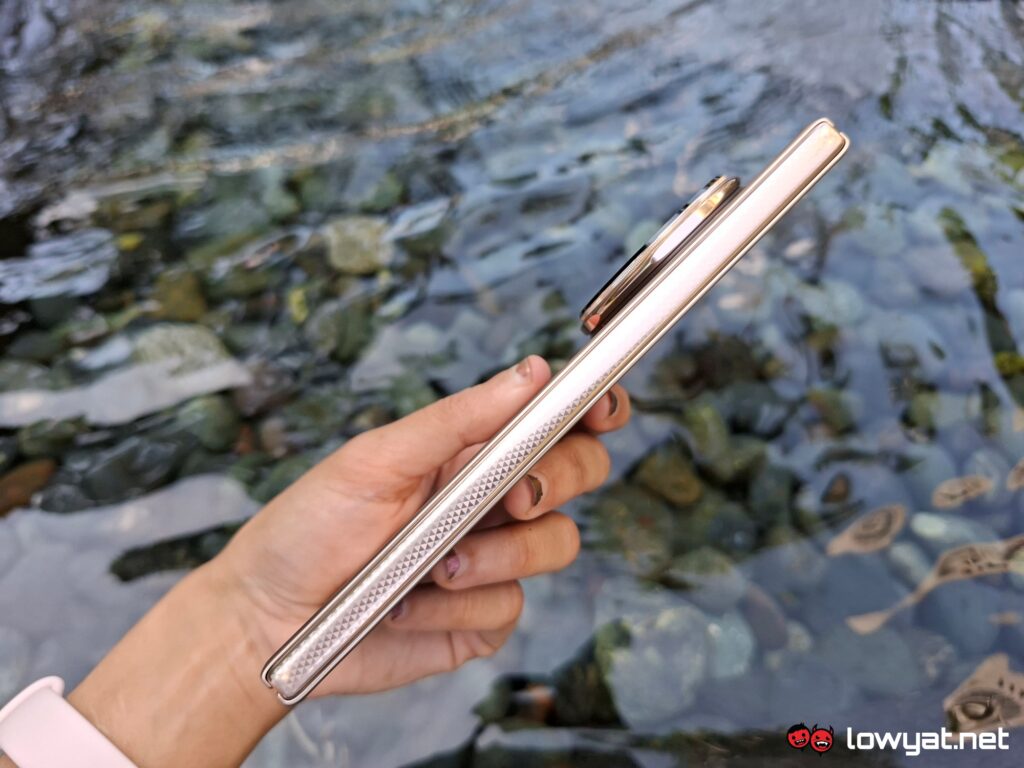The battle of ultra thin foldables is upon us (again), with companies racing to release what they believe to be the “slimmest” smartphone the world has ever seen. Among the contenders is the HONOR Magic V5, which technically holds the title with the Ivory White version measuring 8.8mm when folded and 4.1mm when opened flat. However, our Dawn Gold review model is slightly thicker at 9mm folded and 4.2mm unfolded, so it doesn’t quite make the cut even though it’s still thinner than its predecessor.
Still, supermodel thinness is only one aspect to consider when it comes to smartphones, and given how each one is vying to be the slimmest of them all, a phone has to offer more to really stand out among the competition. So, does the Magic V5 have more going for it, or does it lean closer to mundane than magical? Well, let’s just say the foldable has a few tricks up its sleeve.
Specifications
Looks and Functionality
 As I’ve mentioned before, the barely perceptible difference in thickness is hardly a major concern, and at this point, it does seem like we’ve reached the limit of how many millimetres can realistically be shaved off a phone without having to fundamentally rethink how the devices work. The Magic V5 is, for all intents and purposes, thin enough to masquerade as a regular candybar phone when folded.
As I’ve mentioned before, the barely perceptible difference in thickness is hardly a major concern, and at this point, it does seem like we’ve reached the limit of how many millimetres can realistically be shaved off a phone without having to fundamentally rethink how the devices work. The Magic V5 is, for all intents and purposes, thin enough to masquerade as a regular candybar phone when folded.
However, it does suffer from the same problem as the Magic V3, which is the massive camera module. Aside from looking awkward when compared to the rest of the phone, it makes it impossible for the device to lie flat on any surface.
While I don’t go out of my way to abuse electronics, I tend to be heavy-handed with them, which raised internal concerns about possibly destroying such a flimsy-looking thing. Fortunately, though, the phone is a lot sturdier than its slim body lets on. Also worth pointing out is the IP59 rating, which means the Magic V5 is better protected against dust and spills than other foldables currently on the market.
Of course, there is also the subject of the crease on the inner display. It’s something no foldable can escape from, but HONOR’s comes a long way since the first. It’s only really visible when the display is off, and it all but disappears when the screen is in use. Of course, feeling it is a different matter entirely, but I found that it’s not as disruptive as I expected it to be, even when using the phone for drawing. The Magic V5 does come with stylus support, but that’s a separate purchase altogether.
 The device runs on Android 15 via MagicOS 9, which does come with its share of first- plus third-party bloatware. As with all modern flagships, the Magic V5 features an array of AI-powered functions. By default, the home screen has an AI Suggestions widget that displays a selection of apps based on what you previously used and opened. In addition to the translation functions that were included in its predecessor, the phone includes a new Deepfake detection feature for video calls. It also has foreign object detection, notifying users when particles are trapped on the interior display when folded.
The device runs on Android 15 via MagicOS 9, which does come with its share of first- plus third-party bloatware. As with all modern flagships, the Magic V5 features an array of AI-powered functions. By default, the home screen has an AI Suggestions widget that displays a selection of apps based on what you previously used and opened. In addition to the translation functions that were included in its predecessor, the phone includes a new Deepfake detection feature for video calls. It also has foreign object detection, notifying users when particles are trapped on the interior display when folded.
Performance and Battery
 The Magic V5 is equipped with a Qualcomm Snapdragon 8 Elite, so it shouldn’t come as a surprise that it can tackle any task with ease. Apps open in the blink of an eye, and switching back and forth between them is just as quick. Basically, it’s capable of pretty much whatever one can imagine, be it gaming, multitasking, or just doomscrolling for hours on end.
The Magic V5 is equipped with a Qualcomm Snapdragon 8 Elite, so it shouldn’t come as a surprise that it can tackle any task with ease. Apps open in the blink of an eye, and switching back and forth between them is just as quick. Basically, it’s capable of pretty much whatever one can imagine, be it gaming, multitasking, or just doomscrolling for hours on end.
Speaking of multitasking, the phone lets you have up to three different apps open at once in split-screen view, although not all of them will be clearly visible at the same time. You can also pull up a bunch of other apps as floating windows in this mode, although you can only have one floating window stacked on top of the three apps at a time. The rest of the apps get tucked away in an easily accessible sidebar. All in all, this mode very much feels like the ultimate ADHD experience.
I’d say a pretty underrated feature is the ability to save app pairs to the home screen, so you can open them with just one tap, which saves you the hassle of opening them one by one. That said, entering split-screen mode is already fairly quick, as you only need to drag and drop the app to one side of the display.
Gaming is, predictably, a smooth affair, even when you have the settings cranked up and other apps running in the background. I tried playing Wuthering Waves in the phone’s unfolded form with a YouTube video running in split-screen mode. Important to note that the game does not let you adjust the window size, so you can’t actually watch the video while playing, but you can listen to stuff while you game without experiencing any noticeable drops in performance.
There are some drawbacks. The problem, of course, lies in temperature control. The phone doesn’t manage heat very well, and it’s especially noticeable when you’re gaming in the device’s unfolded form. This is probably where the phone’s thinness becomes a weak point, as it’s quick to get uncomfortably hot.
As for the battery, the global version of the Magic V5 gets a slightly nerfed capacity of 5,820mAh compared to the model released for the Chinese market. For the video streaming test, it lasted about 12 hours in its unfolded state and 17 hours when folded. It’s definitely not as long as some of the available options. It certainly does better for day-to-day activities, with a single charge lasting a little more than two days with moderate usage.
Camera
 The Magic V5 sports a similar setup to its predecessor, comprising a 50MP main sensor, a 64MP periscope telephoto lens, and a 50MP ultra-wide camera. Of course, the cameras are supported with AI algorithms to enhance the final results.
The Magic V5 sports a similar setup to its predecessor, comprising a 50MP main sensor, a 64MP periscope telephoto lens, and a 50MP ultra-wide camera. Of course, the cameras are supported with AI algorithms to enhance the final results.
There are also a few colour profiles, namely Natural, Vibrant, and Authentic. As one could probably guess, pictures taken in Natural mode have a neutral colour profile. On the other hand, the Vibrant mode brings out the warm tones for a brighter final image, while the Authentic mode bumps up the saturation and adds a slight darkening effect.
All in all, the phone takes some pretty good pictures, but you can easily tell where artificial adjustments have been made, especially with objects in the distance and situations with poor lighting. In low-light conditions, the AI applies an aggressive brightening effect to the final image.
The zoom goes all the way up to 100x, but it’s digital and very much AI-assisted to boot. Shots taken at this level are, simply put, not good. There’s quite a bit of noise going on, and it’s pretty obvious that AI is being used to fill in the details. As such, it’s only really useful for subjects like distant buildings. But even then, it’s not really practical, as you need to have either a tripod or an incredibly steady hand to be able to keep what you want to capture in frame. In short, it’s a parlour trick.
Sample Images
Competition
Oppo Find N5
 The OPPO Find N5 launched back in February and ranks among the thinnest foldables on the market at the moment. Its outer display is a 6.62-inch LTPO OLED panel, while the interior sports an 8.12-inch LTPO OLED screen. Under the hood, it runs on a Qualcomm Snapdragon 8 Elite chipset paired with 16GB of RAM and 512GB of storage. Powering it is a 5,600mAh battery with support for 80W wired and 50W wireless charging.
The OPPO Find N5 launched back in February and ranks among the thinnest foldables on the market at the moment. Its outer display is a 6.62-inch LTPO OLED panel, while the interior sports an 8.12-inch LTPO OLED screen. Under the hood, it runs on a Qualcomm Snapdragon 8 Elite chipset paired with 16GB of RAM and 512GB of storage. Powering it is a 5,600mAh battery with support for 80W wired and 50W wireless charging.
As for cameras, the Find N5 sports a triple setup comprising a 50MP primary, a 50MP periscope telephoto, and an 8MP ultra-wide. Meanwhile, the front cameras are both 8MP sensors. All this comes in a slim body weighing 229g and measuring 8.9mm and 4.2mm when folded and unfolded, respectively. Price-wise, it will set you back RM7,999.
Samsung Galaxy Z Fold7
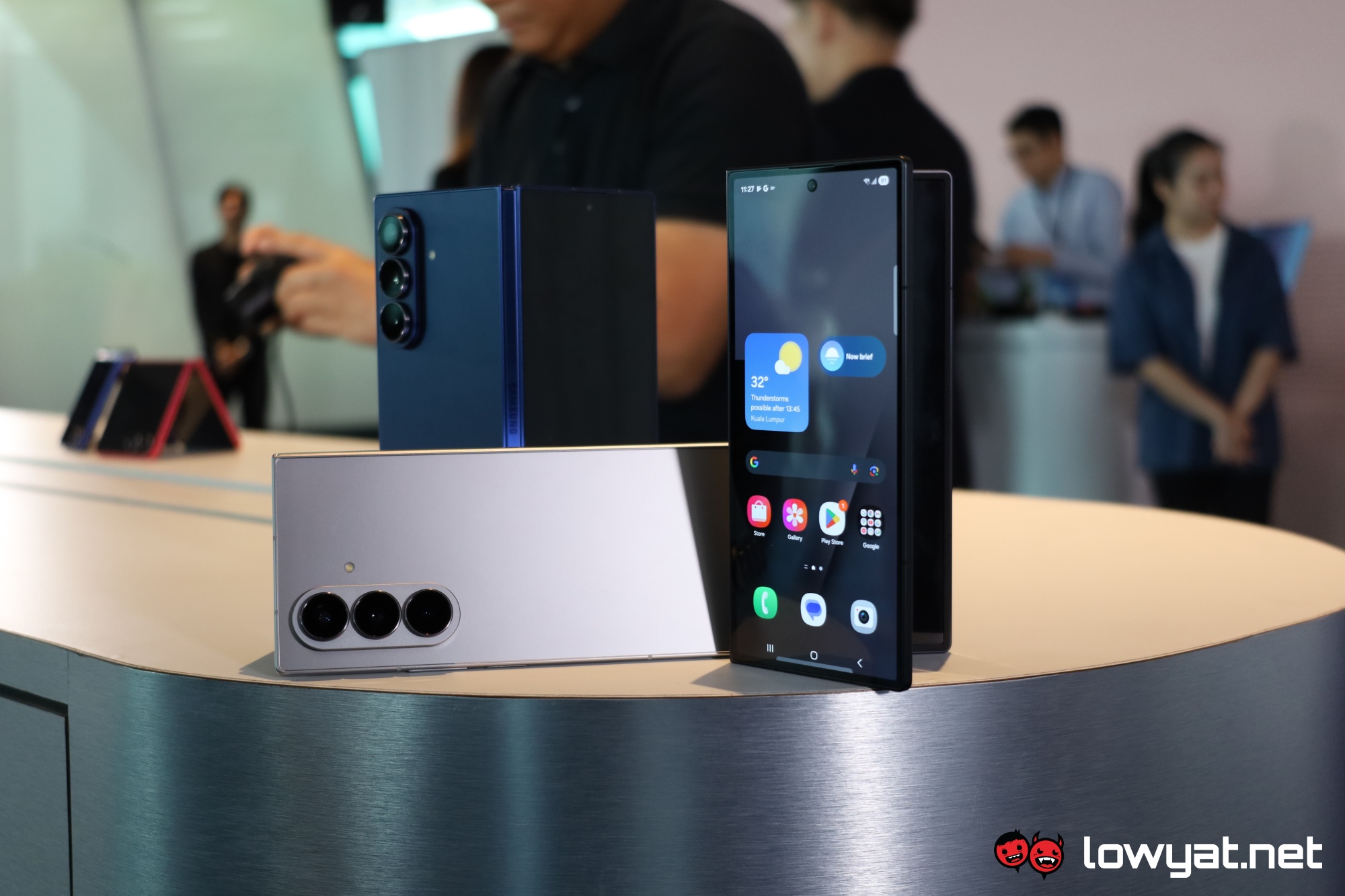 Samsung’s freshly minted addition to its repertoire of book-style foldables was unveiled last week. The Galaxy Z Fold7 features a 6.5-inch Dynamic AMOLED 2X cover screen and an 8-inch Dynamic AMOLED 2X main display, Qualcomm’s Snapdragon 8 Elite for Galaxy SoC with up to 16GB of RAM and up to 1TB of storage, and a 4,500mAh battery. This is all wrapped up in a slim and light 215g package measuring 8.9mm when folded and 4.2mm when opened flat.
Samsung’s freshly minted addition to its repertoire of book-style foldables was unveiled last week. The Galaxy Z Fold7 features a 6.5-inch Dynamic AMOLED 2X cover screen and an 8-inch Dynamic AMOLED 2X main display, Qualcomm’s Snapdragon 8 Elite for Galaxy SoC with up to 16GB of RAM and up to 1TB of storage, and a 4,500mAh battery. This is all wrapped up in a slim and light 215g package measuring 8.9mm when folded and 4.2mm when opened flat.
For imaging, the Fold7 is equipped with a triple-camera main comprising a 200MP wide, a 10MP ultra-wide, and a 10MP telephoto lens. Both selfie cameras are 10MP units in a punch-hole setup. Of course, the phone comes at a pretty pricey RM7,799 just for the 12GB + 256GB configuration, with the 12GB+512GB and 16GB+1TB options priced at RM8,399 and RM9,899 respectively.
Conclusion
 As the market becomes saturated with newly released foldables, the HONOR Magic V5 certainly faces some tough competition. While its form factor is impressive, there other phones are capable of matching its thinness, as evidenced in the competition tab. That said, there is more to the device than its appearance, which, by the way, is quite bewitching. Its deceptively durable build, IP59 rating, and stylus support stand, in my humble opinion, as its strong points.
As the market becomes saturated with newly released foldables, the HONOR Magic V5 certainly faces some tough competition. While its form factor is impressive, there other phones are capable of matching its thinness, as evidenced in the competition tab. That said, there is more to the device than its appearance, which, by the way, is quite bewitching. Its deceptively durable build, IP59 rating, and stylus support stand, in my humble opinion, as its strong points.
It also comes with lots of practical features. The highlight is naturally the multitasking function, which is fun, convenient, and easy to access. For RM6,999, the Magic V5 certainly lives up to its name, offering an experience that’s nothing short of enchanting.
Photography by Nurul Kamil.


























